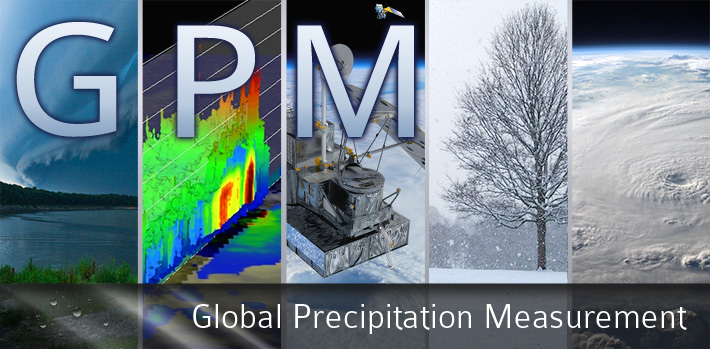IMERG/MRMS
Comparisons of rain rates from IMERG and MRMS (Q3)
IMERG
Integrated Multi-Satellite Retrievals for GPM (IMERG) Algorithm
is intended to intercalibrate, merge, and interpolate "all" satellite microwave precipitation estimates,
together with microwave-calibrated infrared (IR) satellite estimates, precipitation gauge analyses, and
potentially other precipitation estimators at fine time and space scales for the TRMM and GPM eras over
the entire globe. The system is run several times for each observation time, first giving a quick estimate
and successively providing better estimates as more data arrive. The final step uses monthly gauge data
to create research-level products. Background information and references are provided to describe the context
and the relation to other similar missions. Issues involved in understanding the accuracies obtained from
the calculations are discussed. Throughout, a baseline Day-1 product is described, together with options
and planned improvements that might be instituted before or after launch depending on maturity and
project constraints.
The IMERG gridded estimates are on a 30-minute temporal resolution and a 0.1-degree by 0.1-degree spatial resolution
extending from 180W to 180E and 60S to 60N for Version 5 and earlier versions, 90S to 90N for Version 6.
For more information about IMERG, download
IMERG_ATBD_V4.6.pdf
Thanks to George Huffman and David T. Bolvin for providing near-realtime IMERG data.
Comparisons with MRMS (or called Q3)
The comparisons are conducted over the CONUS (25N-50N, 125W-65W) using MRMS data and
IMERG (Early and Late Runs) during the commonly available periods from Jun 2014 to Aug 2017 for V04A and V05B,
or IMERG (Early, Late & Final Runs) from Jun 2014 to Jun 2022 for V06B except for Jan-May 2016 when MRMS data are missing.
Note:
There is no back end gauge correction for V04A/V05B/V06B IMERG Early and Late Runs, so
IMERG cal and uncal fields are the same.
IMERG Final Run V06B ends on 30 Sep 2021.
As of this update on 28 Mar 2023, IMERG Early & Late Run V06B and MRMS data are available to Mar 2023,
and GPCC (monitoring_v2020) data are available to Dec 2022.
MRMS data are missing for 27 Jul 2022 - 25 Aug 2022.
- Area-averaged daily rainfall
MRMS rairates are classified as two groups with RQI, radar-gauge ratios and
precipitation type filters:
(1) QCed data, RQI=100, 0.5<=ratio<=2, liquid precipitation only (no snow/frozen precipitation);
(2) All available data
rain rates (rain and non-rain) from each product (MRMS, MRMS_QC,IMERG_Early, IMERG_Late, IMERG_Final) at
its native resolutions (MRMS: 0.01o,0.5h; IMERG: 0.1o, 0.5h) are accumulated to daily rain totals.
Then the daily MRMS rain totals at 0.01o are resampled to 0.1o resolution.
Finally, the daily rain totals from each product are averaged
over all 0.1o pixels over the CONUS.
- Scatter plot for area-averaged half-hourly rain rates (only for the months when both IMERG and MRMS data are available)
- Density plot for half-hourly (0.1o) rain rates
Yearly density plots for IMERG (Early, Late & Final Runs) vs QCed MRMS (both rain rates >=0.1 mm/h).
- PDF by half-hourly (0.1o) rain occurrence and volume for different rain thresholds
- Error component plot for half-hourly (0.1o) rain rates
Rain/no-rain threshold is set to 0.1 mm/h. MRMS data are QCed
by applying following conditions:
RQI=100, 0.5<=ratio<=2, liquid precipitation only (no snow/frozen precipitation)
- Daily rainfall [mm] contours
Daily rainfall for each product is accumulated from its native temporal resolution (0.5h)
at 0.1o spatial resolution.
0- and non-0 rain rates are all included.
- Half-hourly rain rate [mm/h] contours
Half-hourly rain rates for each product are accumulated from its native temporal resolutions
(0.5h) at 0.1o spatial resolution.
0- and non-0 rain rates are all included.
- Time series of monthly
mean rain rates,
ratios and correlations (V06B)
The monthly mean rain rate is estimated from daily area-averaged rain totals.
|



